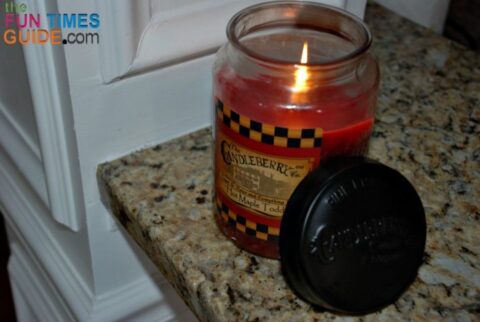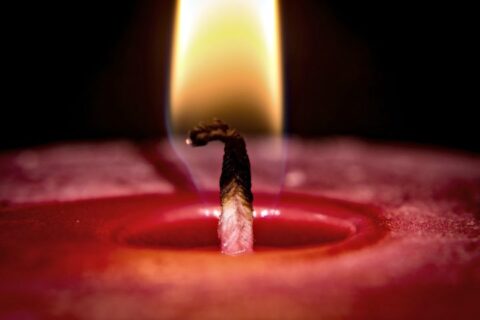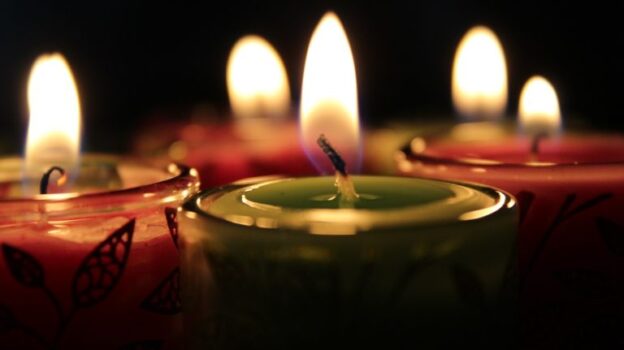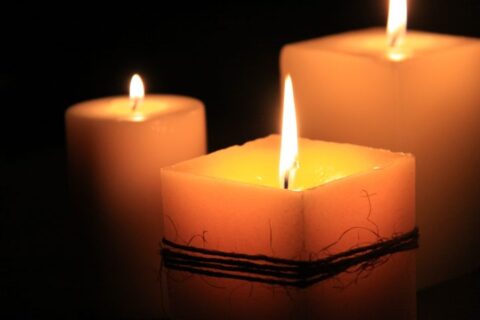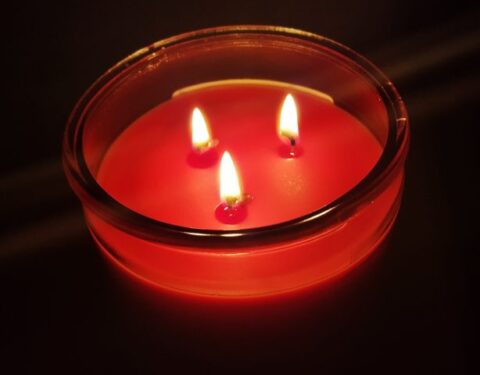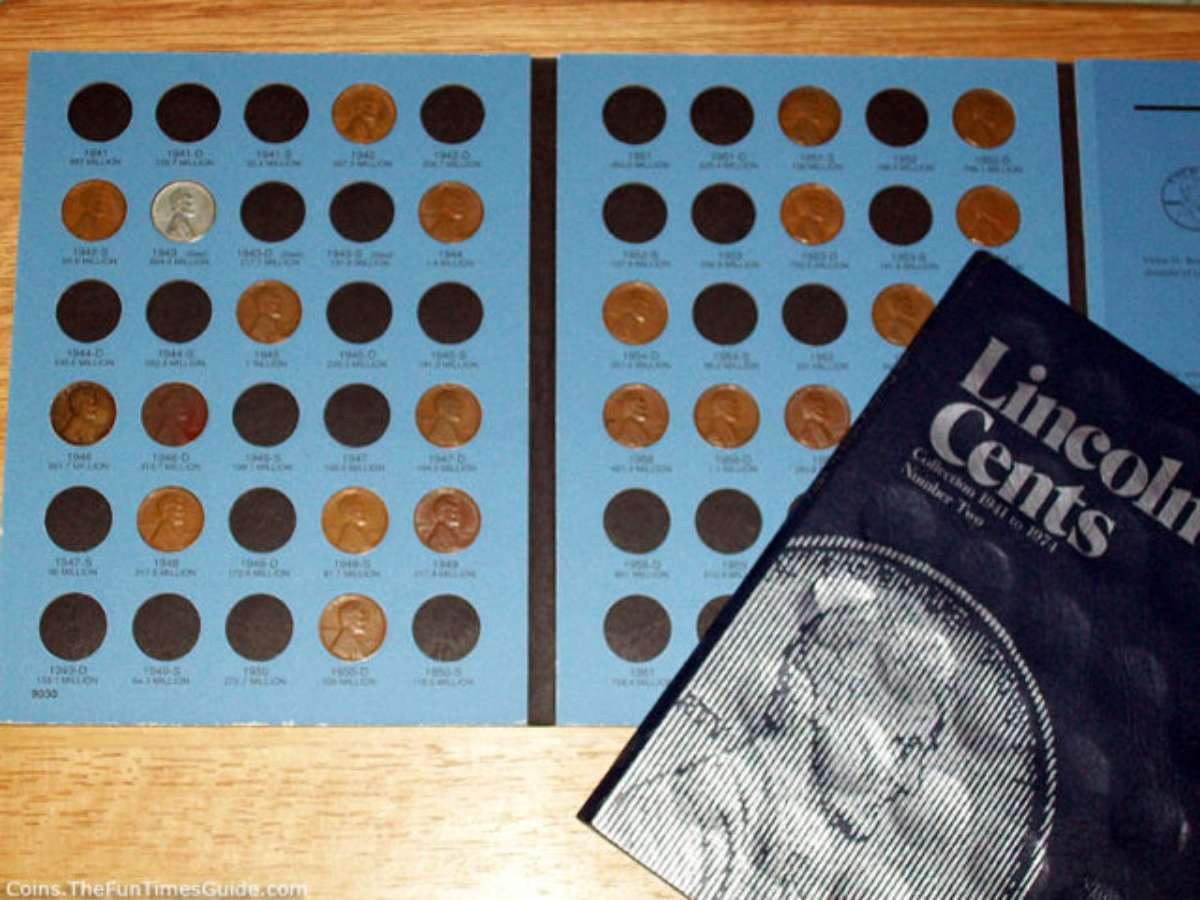I’m a candle fanatic!
I have more than one candle in practically every room of my house. (No kidding.)
I mostly buy soy candles these days.
But I’m a sucker for just about any “cute” candle I see. And I still have some favorite paraffin wax candles that I regularly buy for their amazing scents — like Candleberry candles. (My favorite scent right now is a bourbon-scented Candleberry candle that I got at the Wild Turkey distillery in Kentucky!)
Since candles are one of the most versatile and well-accepted gifts on the planet, I’m constantly giving candles as gifts as well.
Oh, and I’ve also dabbled with making candles myself! It’s a fun way to spend an afternoon with girlfriends, but I’m lazy — and prefer to buy most of my candles these days. (Here’s how to make 50-hour soy candles yourself, if you’re interested.)
Through the years, I’ve discovered some secrets for achieving long lasting candles — simple things you can do to make your candles burn longer and cleaner.
For each of the following candle tips, I’ve included a helpful takeaway from a fellow candle fanatic who explains how and why each tip is true.
For starters, here’s a summary of the things that separate long lasting candles from ho-hum average candles:
A candle’s burn rate, which refers to the length of time a lighted candle lasts, primarily depends on the quality of the wax and wick used. Candle waxes undergo special processing methods to optimize the candle’s burn rate. For example, waxes may be refined or purified, mixed with other wax types, and hardened with additives. No matter how long a candle is made to last, environmental factors and improper usage can snuff out the life of a candle faster than its typical burn time. These factors include exposure to draft and heat, neglect in trimming the wick, leaving the candle burning longer than necessary, and other careless or wasteful practices.
~ eBay Candles
10 Little-Known Tips For Long Lasting Candles

#1 – If you want to decrease the amount of smoke when putting out a candle (either a soy candle or paraffin wax candle, it doesn’t matter), you should use a wick dipper. This is very different from a candle snuffer.
#2 – You should trim the wick of a candle every time before you light it — so that the wick is between 1/8th to 1/4th of an inch tall. You can use a wick trimmer, nail clippers, or just regular scissors. Whatever you choose should be used only on candles though — otherwise you’ll see black soot marks on other things you cut.
Keeping the wick trimmed to 1/8 of an inch at all times helps control the amount of “fuel” or wax that is present. By keeping the amount of fuel limited, the flame will create ideal complete combustion where carbon particles are absorbed by the flame. This means less soot is formed while the candle is burning. The formation of soot has nothing to do with the type of wax (soy, paraffin, vegetable, or other) — as all burning items create soot as a product of incomplete combustion. It all has to do with the quality of the wick and the proper care of the candle!
~ Yankee Candles
#3 – To prolong the life of your candles, keep in mind that each candle should not be burned more than 4 hours at a time. Then allow the candle to cool for at least 2 hours before relighting.
It is recommended that after burning for 4 hours, candles be extinguished, allowed to cool for 2 hours, and trimmed before relighting.
~ Yankee Candle Company
#4 – To get the longest burn time from your candles, the first time you light a candle it should be allowed to melt long enough to fill the entire center with liquid. As the liquid around the wick melts, the candle pool will expand to the outside rim of the candle (or the sides of the candle container).
Each time you light the candle after that, plan to burn it until it reaches the “memory pool” you created with the first burn — generally, this is longer than the first burn. Following these guidelines will ensure a cleaner and longer lasting candle. You must also remember to reduce the wick to 1/4″ before each burn and keep all candles away from drafts as much as possible. The burn time depends on the diameter of the candle or container, the wick size, the type of wax, the ambient room temperature, and drafts of air around the candle.
~ Patch
#5 – A flickering candle is a sign that it is not burning properly. A candle topper eliminates the flicker.
A candle topper essentially eliminates this flicker allowing a constant heat source to radiate out over the wax surface allowing for a consistent and even burn. The toppers design also allows the candle to retain the heat which is needed to form larger wax pools.
~ The Candle Review
#6 – The flame of a candle should be 1 inch in height.
Flame should be approximately 1″ tall. If flame is too tall and/or flickering, trim the wick shorter before lighting. If flame is too small, leave the wick longer before lighting (about 5/8″). If the wick is trimmed too short, it won’t create the correct flame height and enough heat to melt wax.
~ Candle Science

#7 – The type of wax a candle is made from affects its burn rate. These are the most common types of candle wax used today:
- Paraffin wax (made from petroleum oil or mineral oil) is the most common, a bit lighter than other waxes, produces the most soot, burns down the fastest, and is the cheapest.
- Vegetable wax (made from soybean oil or palm oil) produces less soot than paraffin wax, burns longer than paraffin wax, and is a bit more expensive.
- Beeswax (made by bees through the consumption of honey produced from flower nectar that they’ve collected) is all natural, yellow in color, has a light scent, produces the least amount of soot, burns the longest (about twice as long as paraffin wax), and is significantly more expensive.
#8 – Round candles last the longest because the wick is evenly spaced from all edges of the candle — so you will get a more even burn each time.
Circular candles burn more effectively than irregular shapes because all the wax is an even distance from the wick. Square candles and other shapes may melt unevenly and leave much wax for waste.
~ Love To Know
#9 – My favorite tip for achieving long lasting candles is to insert a smaller candle inside of a larger candle — once there is enough room! That way, you can maintain the look of the candle you originally bought by just replacing the smaller votive or tealight candle inside each time it burns out.
For large jar and pillar candles, it is possible to create a substitute flame. Once the candle has burned a deep enough well, insert a tea light or votive candle into the well instead of continuing to burn the larger candle. Tea lights and votives are less expensive to replace than larger candles.
~ Love To Know
#10 – Double-wick candles and triple-wick candles are generally long lasting candles. As long as the wicks are evenly spaced and not too close to the edge of the container, then a double wick candle will burn more completely than a single wick candle — because all of the wax melts evenly. In fact, dual (and triple) wick candles burn the candle so efficiently that there is very little wax left on the sides of the jar, and little to no tunneling — which happens when the flame drops below the top level of wax, leaving a dry ring that just won’t melt. Less waste when your candle is burning means longer lasting candles and more candle for your money!
Candles with a diameter of 4″ or larger may need a double wick (or triple, if preferred). The reason for using a double wick in larger diameter candles is to achieve a full burn pool — which can be challenging with only a single wick. There are large wicks designed for wider diameter candles. However, we have found that larger wicks are more prone to mushrooming, soot, and smoke. For this reason, a double wick may be a better alternative.
~ The Flaming Candle
The Bottom Line…
Candle Science summarizes the overall characteristics of an ideal candle.
In a properly wicked container candle:
- The flame is approximately 1″ tall, not flickering excessively.
- Wax melts from edge to edge across the top of the container.
- The melt pool is 1/4″ to 3/4″ deep.
- Wax burns cleanly at the flame without smoke or soot.
- After the candle has burned from top to bottom, wax is completely consumed leaving the sides clean.
More Great Tips For Long Lasting Candles
In addition to the links I’ve included above, here are some other resources to help you buy and burn the longest lasting candles:

